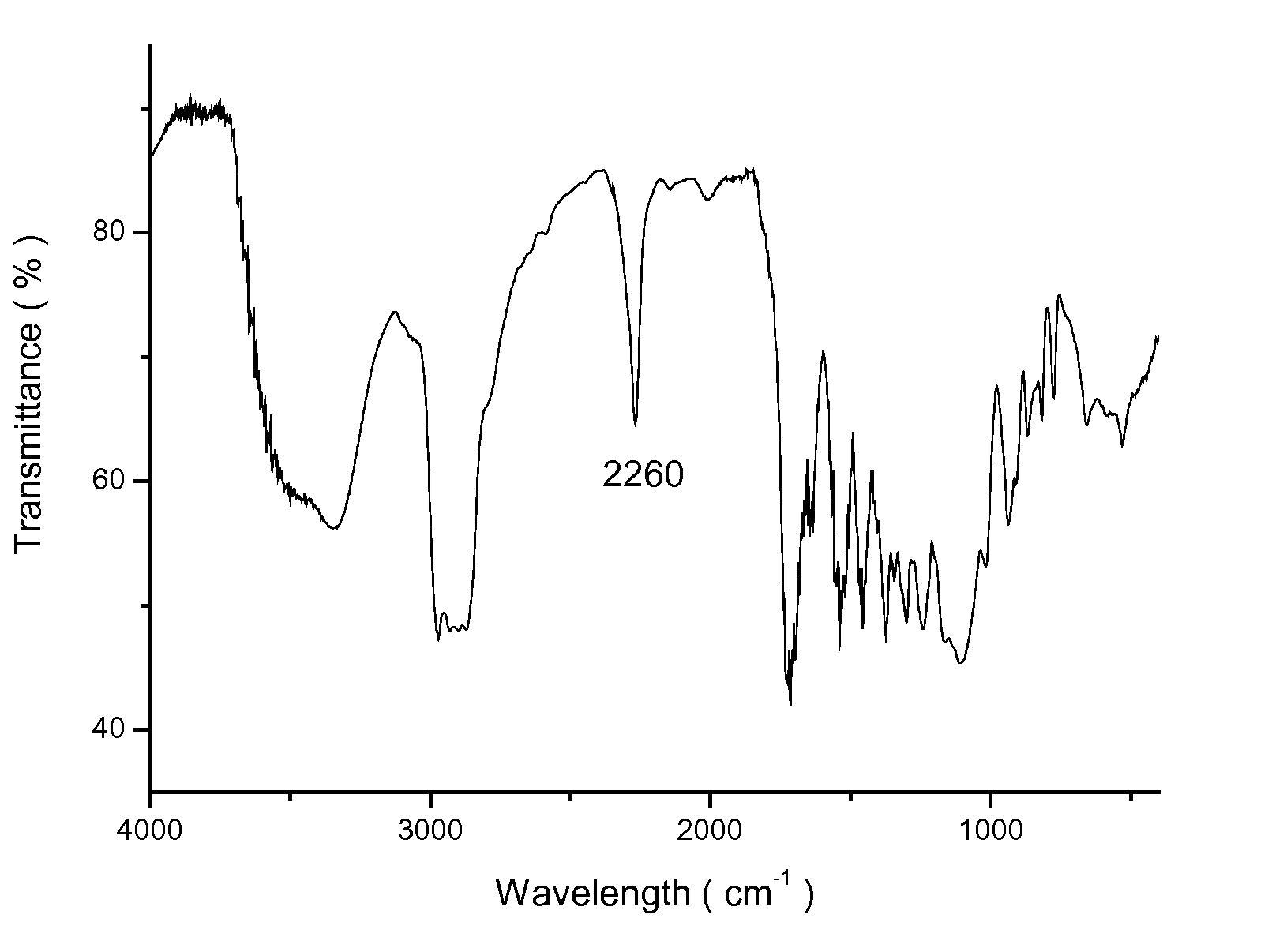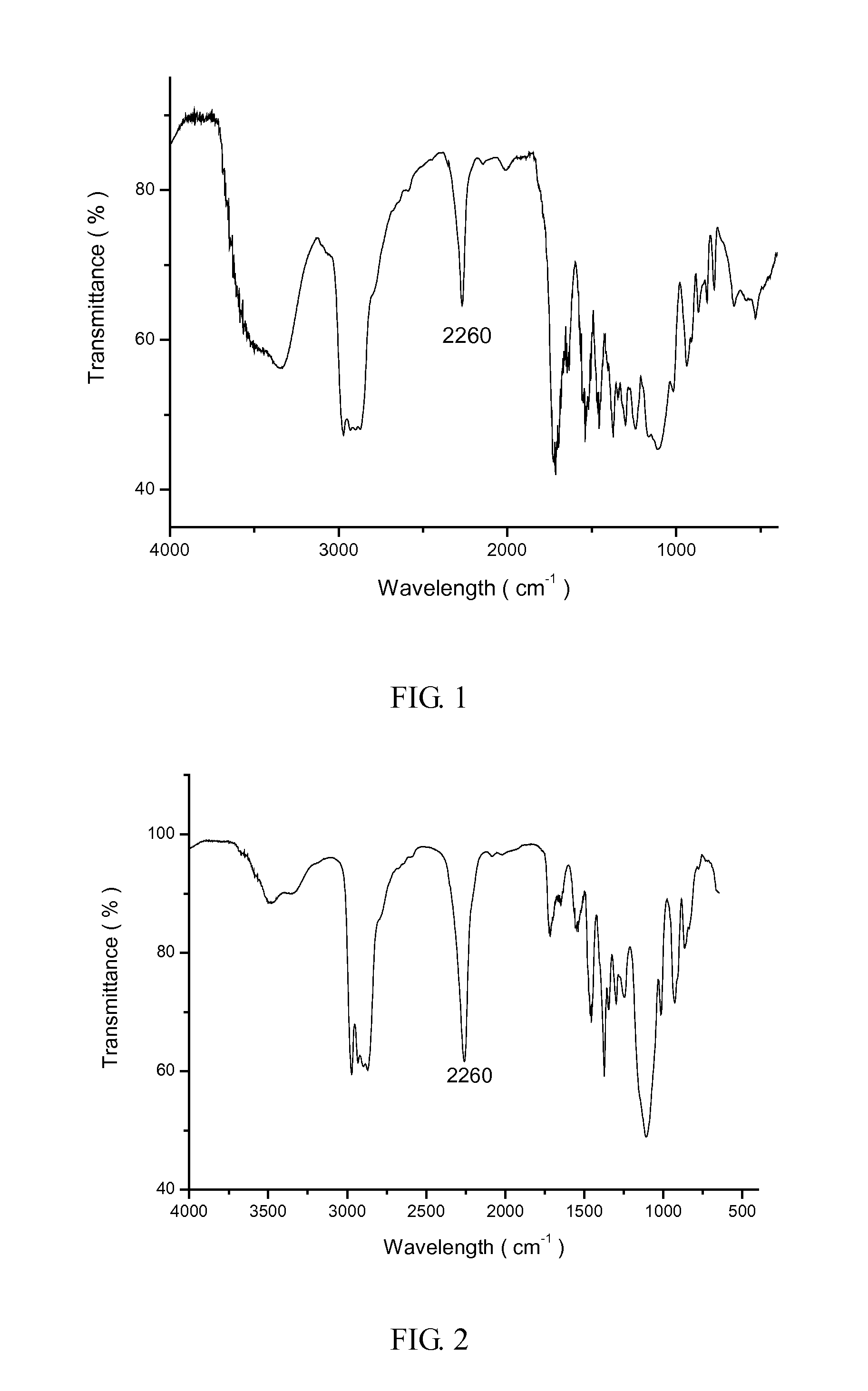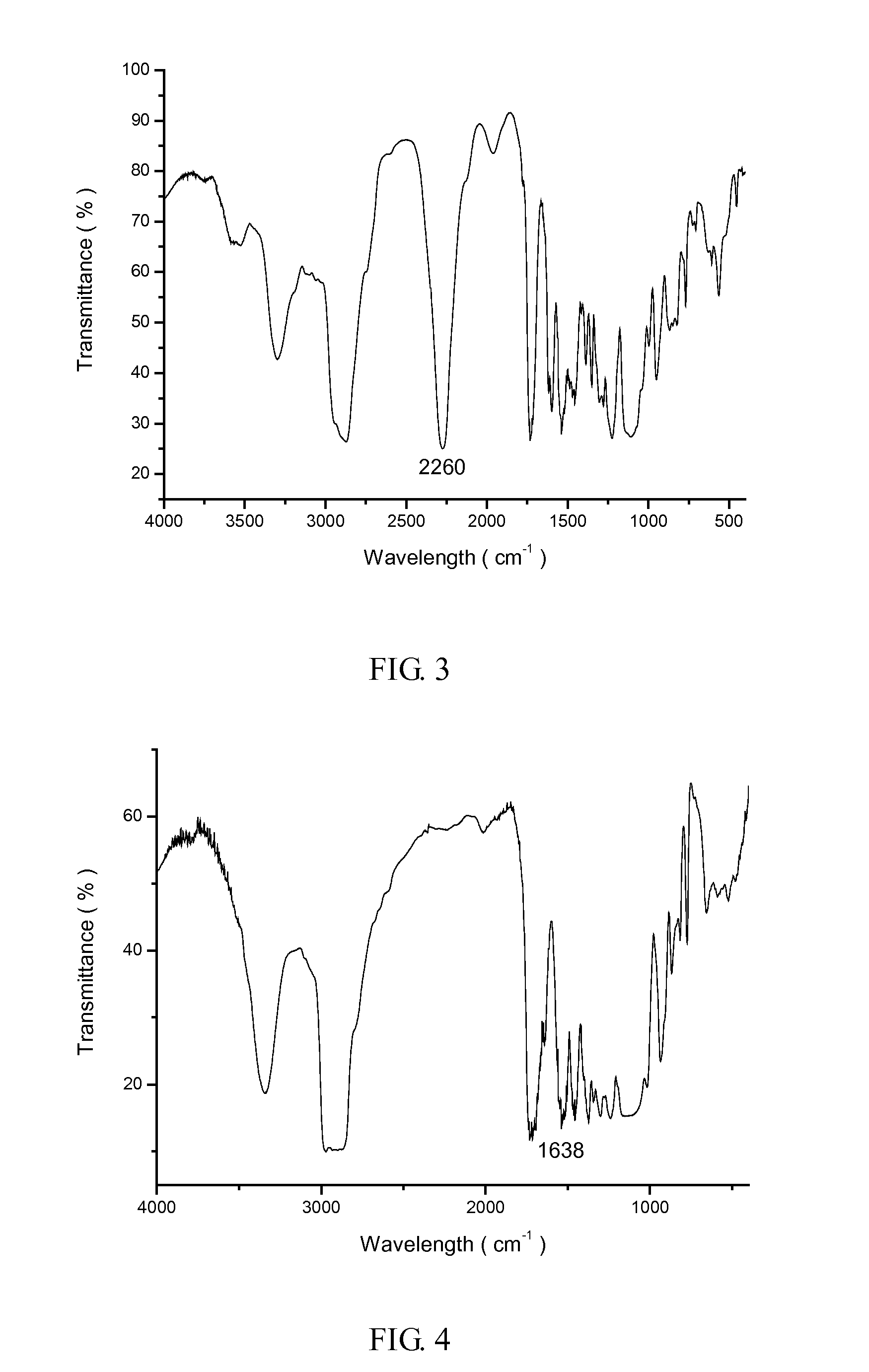Ambient Temperature Curable Hydrophilic PU Oligomer, Method for Synthesizing the same and Surface Treatment Method of using the same
a hydrophilic polyurethane and ambient temperature technology, applied in the field of hydrophilic materials, can solve the problems of inability to maintain the hydrophilicity of textile surfaces, the loss of adhesion of acrylic groups, and even more dissolved in water, so as to increase the density of curing/cross-linking, increase the double-bond concentration of acrylic groups, and spread easily and quickly
- Summary
- Abstract
- Description
- Claims
- Application Information
AI Technical Summary
Benefits of technology
Problems solved by technology
Method used
Image
Examples
example 1
Preparation of Carboxylic-Type Super-Hydrophilic Textiles via Moisture Curing
[0041]The textiles are dipped into PU—COOH solutions, and then are slung in the air. During air drying, the PU—COOH system becomes a network structure via moisture curing reaction (as shown in Scheme II). But the hydrophilic character of hydrophilic PU resin remains unchanged.
example 2
Preparation of Sulfonate-Type Super-Hydrophilic Textiles via Moisture Curing
[0042]The PU—SO3Na is substituted for PU—COOH and the rest of reaction procedures are similar to Example 1. But the hydrophilic character of the hydrophilic PU resin remains unchanged.
example 3
Preparation of Nonionic-Type Super-Hydrophilic Textiles via Moisture Curing
[0043]The PU-PEG is substituted for PU—COOH and the rest of reaction procedures are similar to Example 1. But the hydrophilic character of hydrophilic PU resin remains unchanged.
PUM
| Property | Measurement | Unit |
|---|---|---|
| contact angle | aaaaa | aaaaa |
| temperature | aaaaa | aaaaa |
| temperature | aaaaa | aaaaa |
Abstract
Description
Claims
Application Information
 Login to View More
Login to View More - R&D
- Intellectual Property
- Life Sciences
- Materials
- Tech Scout
- Unparalleled Data Quality
- Higher Quality Content
- 60% Fewer Hallucinations
Browse by: Latest US Patents, China's latest patents, Technical Efficacy Thesaurus, Application Domain, Technology Topic, Popular Technical Reports.
© 2025 PatSnap. All rights reserved.Legal|Privacy policy|Modern Slavery Act Transparency Statement|Sitemap|About US| Contact US: help@patsnap.com



